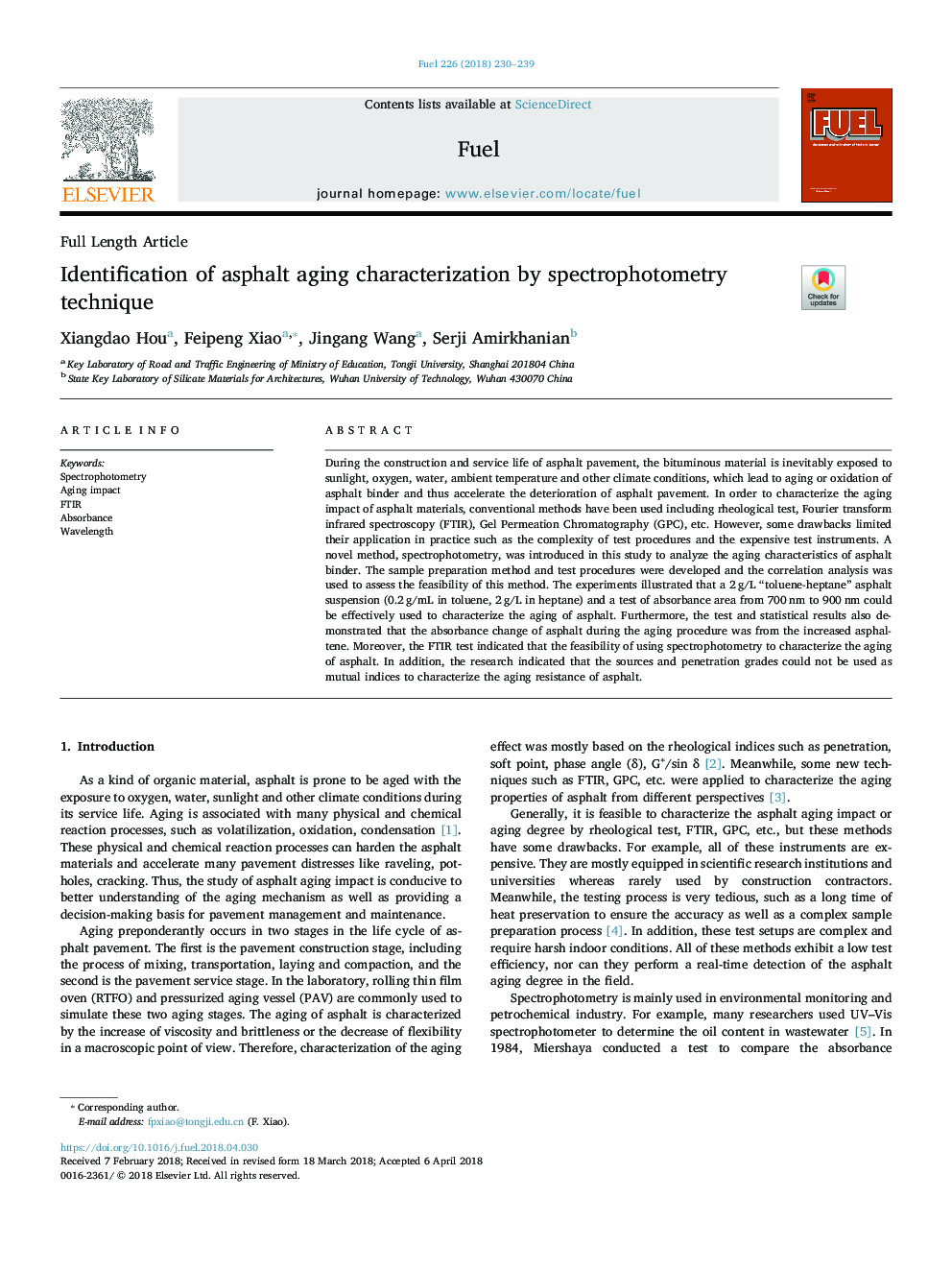| Article ID | Journal | Published Year | Pages | File Type |
|---|---|---|---|---|
| 6630891 | Fuel | 2018 | 10 Pages |
Abstract
During the construction and service life of asphalt pavement, the bituminous material is inevitably exposed to sunlight, oxygen, water, ambient temperature and other climate conditions, which lead to aging or oxidation of asphalt binder and thus accelerate the deterioration of asphalt pavement. In order to characterize the aging impact of asphalt materials, conventional methods have been used including rheological test, Fourier transform infrared spectroscopy (FTIR), Gel Permeation Chromatography (GPC), etc. However, some drawbacks limited their application in practice such as the complexity of test procedures and the expensive test instruments. A novel method, spectrophotometry, was introduced in this study to analyze the aging characteristics of asphalt binder. The sample preparation method and test procedures were developed and the correlation analysis was used to assess the feasibility of this method. The experiments illustrated that a 2â¯g/L “toluene-heptane” asphalt suspension (0.2â¯g/mL in toluene, 2â¯g/L in heptane) and a test of absorbance area from 700â¯nm to 900â¯nm could be effectively used to characterize the aging of asphalt. Furthermore, the test and statistical results also demonstrated that the absorbance change of asphalt during the aging procedure was from the increased asphaltene. Moreover, the FTIR test indicated that the feasibility of using spectrophotometry to characterize the aging of asphalt. In addition, the research indicated that the sources and penetration grades could not be used as mutual indices to characterize the aging resistance of asphalt.
Related Topics
Physical Sciences and Engineering
Chemical Engineering
Chemical Engineering (General)
Authors
Xiangdao Hou, Feipeng Xiao, Jingang Wang, Serji Amirkhanian,
